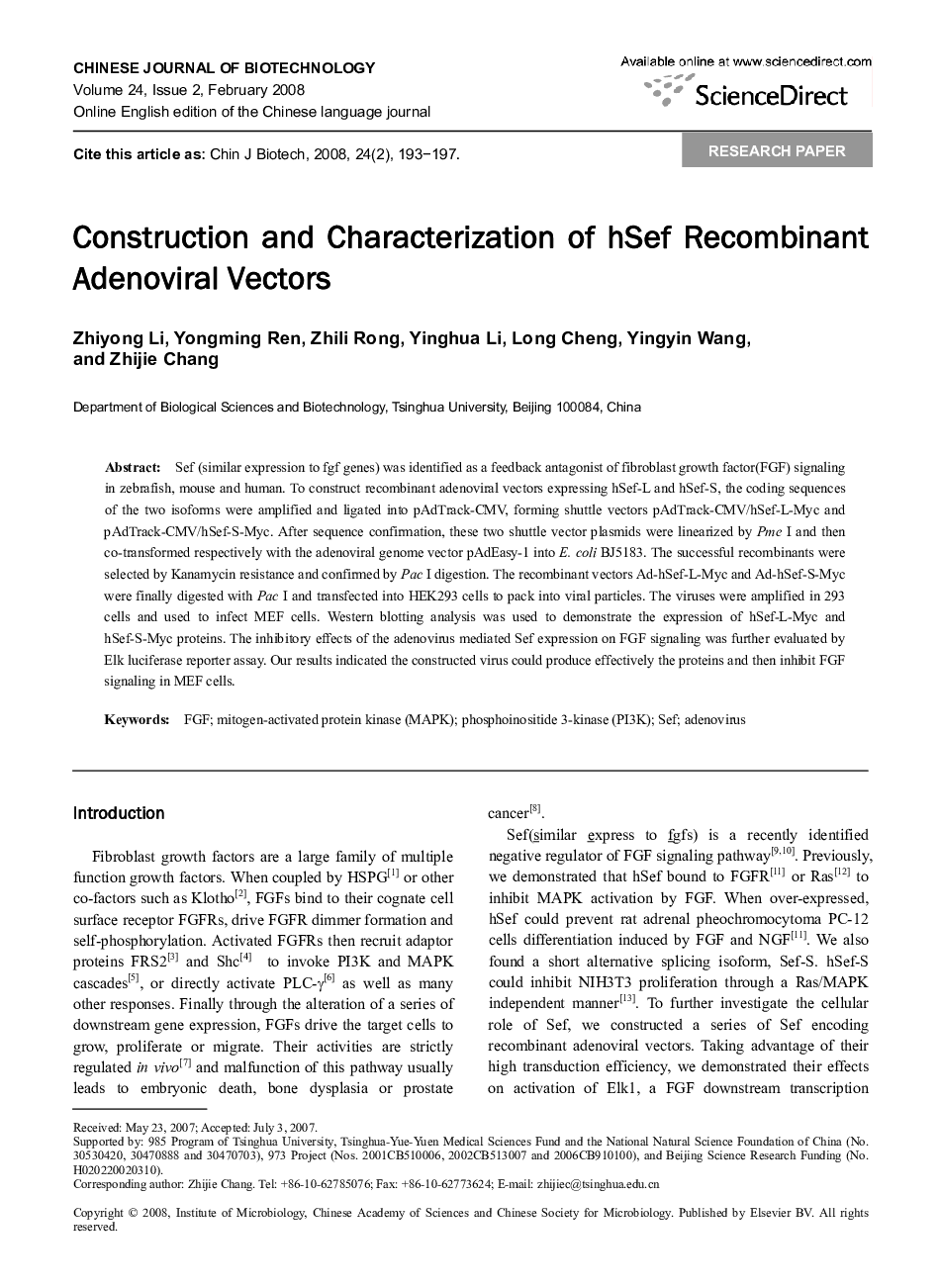| Article ID | Journal | Published Year | Pages | File Type |
|---|---|---|---|---|
| 2078888 | Chinese Journal of Biotechnology | 2008 | 5 Pages |
Abstract
Sef (similar expression to fgf genes) was identified as a feedback antagonist of fibroblast growth factor(FGF) signaling in zebrafish, mouse and human. To construct recombinant adenoviral vectors expressing hSef-L and hSef-S, the coding sequences of the two isoforms were amplified and ligated into pAdTrack-CMV, forming shuttle vectors pAdTrack-CMV/hSef-L-Myc and pAdTrack-CMV/hSef-S-Myc. After sequence confirmation, these two shuttle vector plasmids were linearized by Pme I and then co-transformed respectively with the adenoviral genome vector pAdEasy-1 into E. coli BJ5183. The successful recombinants were selected by Kanamycin resistance and confirmed by Pac I digestion. The recombinant vectors Ad-hSef-L-Myc and Ad-hSef-S-Myc were finally digested with Pac I and transfected into HEK293 cells to pack into viral particles. The viruses were amplified in 293 cells and used to infect MEF cells. Western blotting analysis was used to demonstrate the expression of hSef-L-Myc and hSef-S-Myc proteins. The inhibitory effects of the adenovirus mediated Sef expression on FGF signaling was further evaluated by Elk luciferase reporter assay. Our results indicated the constructed virus could produce effectively the proteins and then inhibit FGF signaling in MEF cells.
Related Topics
Life Sciences
Biochemistry, Genetics and Molecular Biology
Biotechnology
Authors
Zhiyong Li, Yongming Ren, Zhili Rong, Yinghua Li, Long Cheng, Yingyin Wang, Zhijie Chang,
